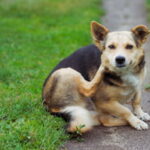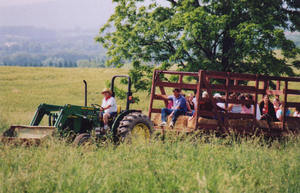After a long day at work, there is nothing worse than coming home to find your house destroyed by your dog. With the long hours that people are spending at work, and their busy lifestyles, this scenario is becoming all too common.
Destructive behavior is most common with younger dogs, but it may affect a dog at any age. The dogs at the highest risk of destructive behavior are rescued dogs, puppies and high energy dogs.
Dogs may also begin displaying destructive behavior if they are fearful or anxious which may occur in times such as divorce, moving to a new home, the death of a family member or pet, being left at a kennel for any length of time, or when a new baby is introduced into the family. These behaviors are not motivated by revenge, but by anxiety. Spending more quality time with an anxious dog will often solve the dog’s destructive behavior.
Without realizing it, we often pay more attention to a dog when it is misbehaving. If you are preoccupied with other issues in your life, the dog may misbehave because it’s the only way it knows how to get your attention. From a dog’s point of view, negative attention is better than no attention at all. Punishment will only make the problem worse since a dog can’t make the connection between the punishment and their earlier behavior. They will only feel rejected and could even act out in other inappropriate ways.
The act of chewing on objects is a natural dog behavior . Teething, anxiety, boredom, and insufficient exercise may increase your dog’s need to chew or engage in destructive behavior. To avoid inappropriate chewing, purchase safe chew objects for your dog such as Nylabones, Kong toys, or sterilized bones. Kong toys and sterilized bones can be stuffed with peanut butter or treats to give your dog an extra challenge.
You can keep your dog occupied while you are away by giving him one of the new sustained-release food devices such as the Buster Cube or the Activity Ball. These are hard plastic toys that you fill with a portion of your dog’s daily ration of food. The food is gradually released as your dog manipulates the toy. The new Goodie Grippers are also based on this same principle.
Be sure to remove any of your belongings that you don’t want in your dog’s mouth. Keep ipods, clothing, shoes, books, trash, cell phones and remote controls out of your dog’s reach. Never offer your dog a shoe or sock to play with because they will become confused about what is an acceptable toy and what is not. Make objects unattractive to your dog by covering them with heavy plastic, aluminum, hot pepper sauce or a commercial “anti-chew” product such as Bitter Apple. Unplug all electrical cords or make them inaccessible.
Increasing a dog’s exercise will often decrease their destructive behavior in the house. A dog that has had a morning walk will be more likely to sleep while you are gone instead of getting into trouble. On-leash walks are important opportunities for you to spend quality time with your dog. It also decreases their boredom by giving them a sense of adventure by exploring new territories.
Playing fetch is a good way to burn some of their natural energy. If you don’t have a large fenced in yard, try going to a tennis court or local park. Be sure to check on your city’s laws regarding unleashed pets in parks. Many dogs also enjoy going to doggie parks or doggie day cares so they can interact with other dogs.
Try enrolling your dog in a training class to build his confidence and decrease his boredom. Teach your dog a few commands such as “drop it” so he when he does pick up an off-limit object you can use your command and then praise him when he responds with positive behavior. The best way to teach “drop it” is to practice exchanging a toy in his possession for a tidbit of food.
You may need to confine a destructive dog to a smaller area of the house. Choose a safe spot that is dog proof with fresh water and safe toys. As your dog learns appropriate behavior, give him unsupervised freedom gradually. Check on him after 5 or 10 minutes initially. Slowly increase the amount of time he is left alone. If he resumes his destructive behavior, decrease the time. Be aware that most puppies aren’t trustworthy for the first year.
With proper training, adequate exercise and lots of love, your dog should learn what behavior is acceptable and what is not. If you have tried all of the above tips and you still cannot control your dog’s inappropriate behavior, you should contact a behaviorist or your veterinarian for advice.



